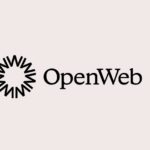Brand safety in advertising—the way ad placement impacts a brand’s reputation—has always been top of mind for publishers and advertisers alike. If a brand’s ad appears alongside offensive content, the fear is that the brand will earn a negative reputation or, worse, experience some more immediate negative consequences.
That’s why, over the last few years, social platforms—which thrive on user-generated content (UGC) that, historically, can seldom be guaranteed “safe”—have attempted to dial up their brand safety efforts. Facebook is providing more transparency to brands regarding the contextual placement of their ads, while YouTube is trying to clean up the questionable content that still proliferates across the platform. For some Publishers, as we’ve covered before, this has meant shying from UGC all together. Still, despite these efforts, 60% of industry professionals say brand safety is a serious concern.
So, I think it’s time to approach brand safety a little differently.
Perhaps, to make the web a better, safer place for everyone (brands included), the first focus for platforms and publishers should be on user experience, and the safety of users—not only on the safety of advertisers.
At OpenWeb, our extensive experience building safe and civil online communities for publishers’ communities gives us a unique perspective into safety online. We know that focusing on user safety has two key benefits for publishers. First, prioritizing user safety creates a better user experience that helps publishers to grow a loyal audience. Second, a focus on user safety and quality will naturally lead to a brand safe experience—you get the best of worlds, which directly impacts your bottom line.
Below, we will detail how we combat the real problem—online toxicity—and how safety and quality positively impact business results for publishers.
The root of the problem: online toxicity
Brand safety has always been a challenge, and it stems from an even bigger problem: online toxicity. Toxic content has many forms, including pointless arguments and all-out flame wars. Content like this might be entertaining for a little while, but it’s ultimately bad news for growing a strong, loyal community of users. That kind of toxicity is like sugar: it might be satisfying in the short-term, but it’s not creating the exciting, healthy communities that keep bringing users back.
Unfortunately though, toxicity permeates much of the web as we know it, especially our social platforms. Recently, 55% of digital media professionals polled reported believing that social media makes them vulnerable to brand risk. However, online communities with effective moderation—like those using our multilayered moderation tech—can facilitate healthier and more positive communities, making them safer for users. So, focusing on creating a positive user experience means fostering community—and creating a safe environment for brands while you’re at it.
Safety and quality help publishers grow loyalty
A quality conversation is fact-based, productive and informative, stays on topic, and doesn’t devolve into personal attacks. Quality conversations are one of the best ways to turn casual website visitors into loyal users who drive more engagement, spend more time on-site, and are more likely to return over time. In other words, quality conversations attract high-quality users.
At OpenWeb, we want to make the web a safer place for everyone, which is why we focus on quality first. We believe that most people want to do good online, and the facts bare this out: a recent report showed that 74% of all online conflicts are initiated by only 1% of the communities.
To that end, we approach quality as a framework where publishers can set their own standards for moderation that best suits their community. We support our partners with moderation technology, like our “Best” Sorting algorithm—an innovation that incentivises better commenting. See how it works here.
As a result, these publisher-hosted communities are safer for users, more appealing to advertisers, and an essential part of a healthier, safer web.
Safer online communities for a safer web
Focusing on user safety by first focusing on creating safer, healthier online communities isn’t just good for publishers and advertisers; it helps make the web a safer, better place. Publishers who prioritize quality and embrace effective moderation will build strong, loyal communities with less toxicity and more positive interaction— and build brand safe experiences, too. Learn more about OpenWeb’s approach to moderation and quality.


